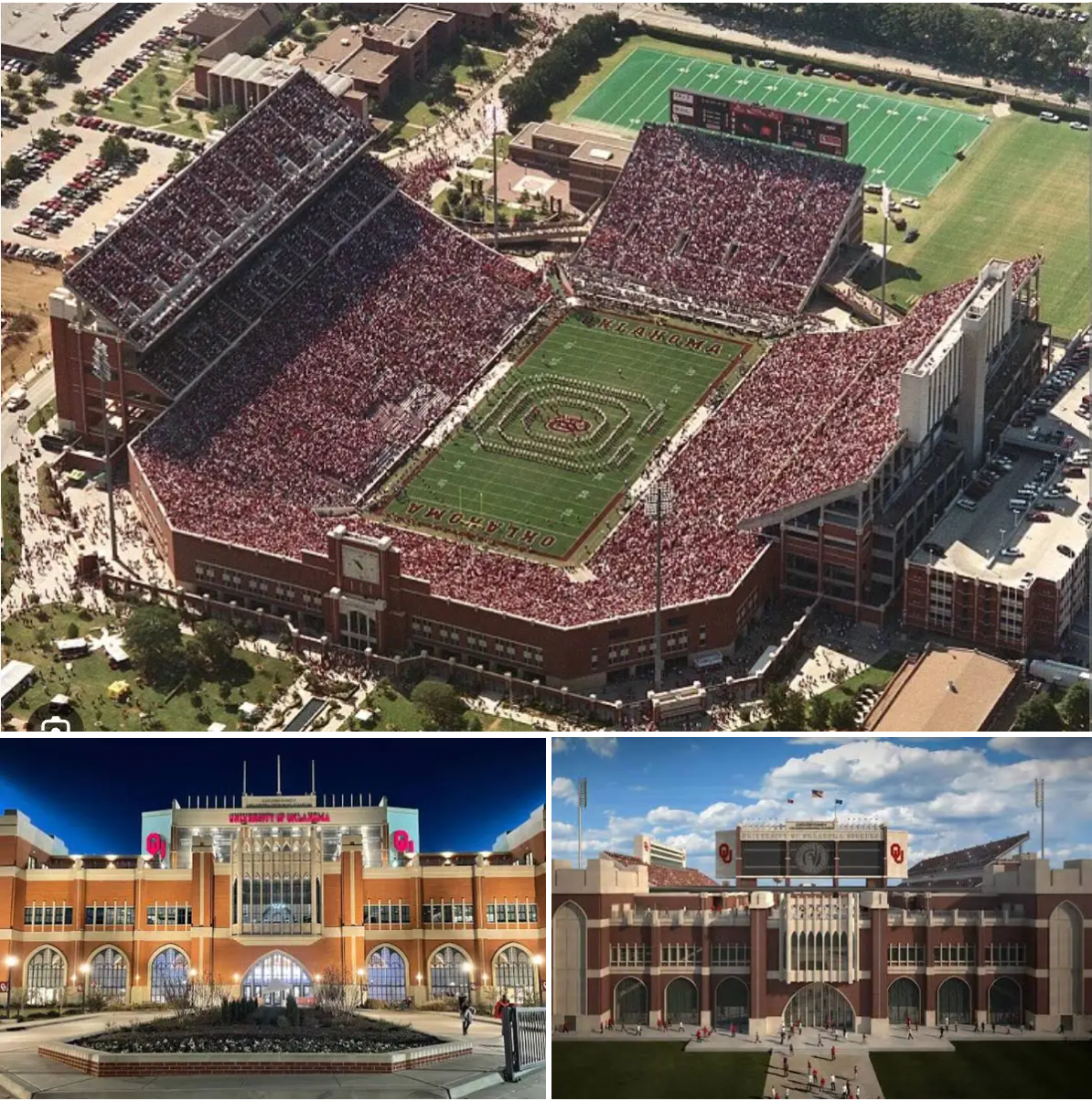Official Announcement: Oklahoma Unveils $1 Billion Memorial Stadium Renovation, Setting a New Standard in College Football
NORMAN, Okla. — In a groundbreaking move that underscores their commitment to excellence on and off the field, the University of Oklahoma has officially announced a massive $1 billion overhaul of Gaylord Family–Oklahoma Memorial Stadium — a project poised to transform the venue into one of the most advanced and luxurious stadiums in all of college football.
The ambitious redevelopment plan includes sweeping upgrades aimed at delivering a world-class game-day experience for fans, players, and recruits alike. Key features of the renovation will include:
State-of-the-art premium suites with private lounges and panoramic views
An expanded lower bowl and new upper-deck seating, increasing overall capacity
A 360-degree concourse with improved flow, accessibility, and fan amenities
High-tech video boards and an immersive digital experience throughout the stadium
Advanced athlete performance and recovery centers underneath the stands
Enhanced tailgating plazas and fan zones surrounding the stadium
“We’re not just upgrading a stadium — we’re building the future of Oklahoma football,” said OU Athletic Director Joe Castiglione. “This investment reflects our program’s legacy, its future in the SEC, and our fans who deserve the very best.”
The Sooners’ move to the Southeastern Conference in 2024 has heightened the stakes in the ultra-competitive world of college football, and this billion-dollar investment signals Oklahoma’s determination to stay at the top of the game, both athletically and commercially.
Construction is expected to begin in early 2026, with a phased approach that will allow the Sooners to continue playing home games in Norman during the process. The full project is slated for completion by the 2028 season.
“This is a bold vision,” said Sooners head coach Brent Venables. “It’s going to give us a competitive edge in recruiting and energize our fan base for decades to come.”
With this announcement, Oklahoma not only reaffirms its powerhouse status — it raises the bar for the future of college football facilities.



